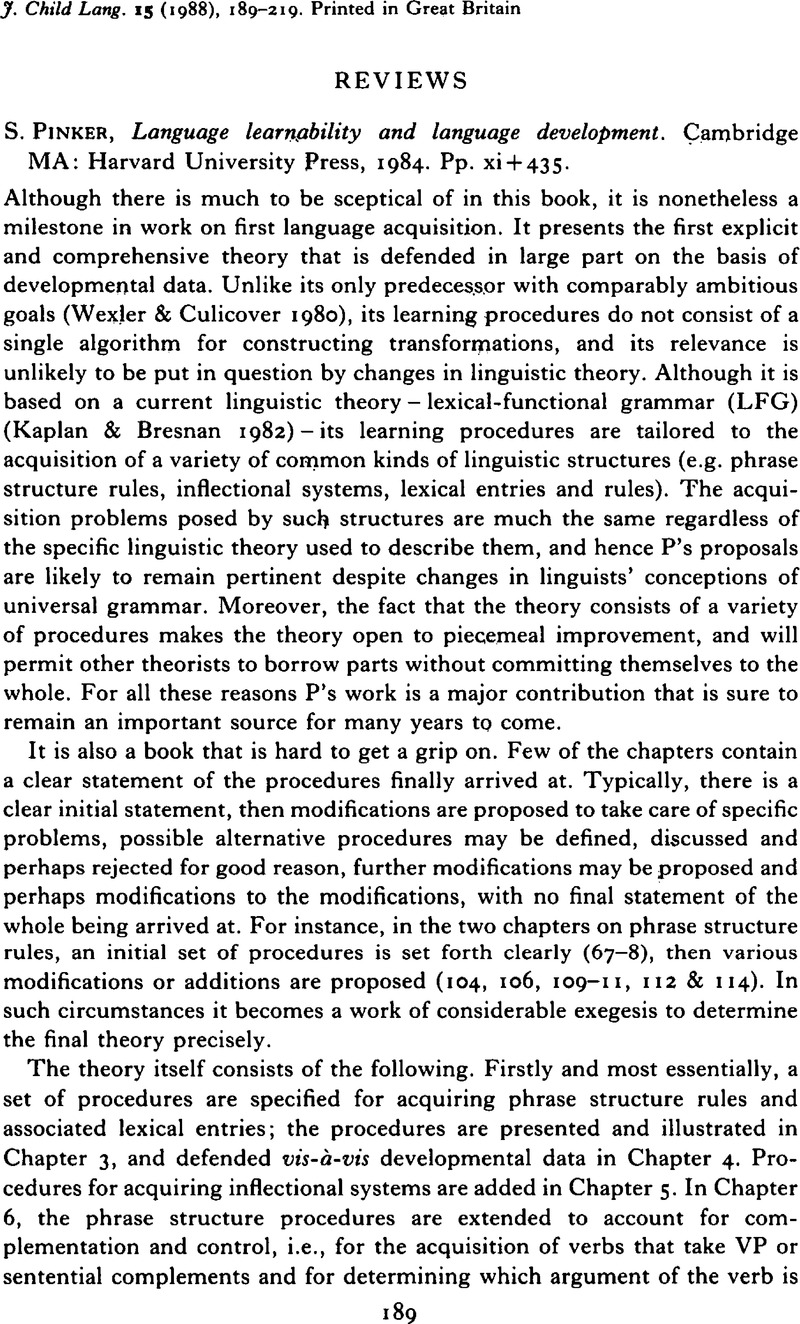Crossref Citations
This article has been cited by the following publications. This list is generated based on data provided by Crossref.
Gathercole, Virginia C.
1989.
Contrast: a semantic constraint?.
Journal of Child Language,
Vol. 16,
Issue. 3,
p.
685.
Braine, Martin D.S.
Brooks, Patricia J.
Cowan, Nelson
Samuels, Mark C.
and
Tamis-LeMonda, Catherine
1993.
The development of categories at the semantics/syntax interface.
Cognitive Development,
Vol. 8,
Issue. 4,
p.
465.
Boloh, Yves
1995.
De quelle sorte de structure innée une théorie explicative de l’acquisition de la syntaxe a-t-elle besoin ?.
Éducation et socialisation,
Vol. 11-12,
Issue. ,
p.
15.
Pine, Julian M.
and
Martindale, Helen
1996.
Syntactic categories in the speech of young children: the case of the determiner.
Journal of Child Language,
Vol. 23,
Issue. 2,
p.
369.
Pine, Julian M.
and
Lieven, Elena V. M.
1997.
Slot and frame patterns and the development of the determiner category.
Applied Psycholinguistics,
Vol. 18,
Issue. 2,
p.
123.
Redington, Martin
and
Chater, Nick
1998.
Connectionist and Statistical Approaches to Language Acquisition: A Distributional Perspective.
Language and Cognitive Processes,
Vol. 13,
Issue. 2-3,
p.
129.
Pine, Julian M.
Freudenthal, Daniel
Krajewski, Grzegorz
and
Gobet, Fernand
2013.
Do young children have adult-like syntactic categories? Zipf’s law and the case of the determiner.
Cognition,
Vol. 127,
Issue. 3,
p.
345.
Masullo, Camilla
Casado, Alba
Leivada, Evelina
and
Sorace, Antonella
2025.
Register variation and linguistic background modulate accuracy in detecting morphosyntactic errors.
Isogloss. Open Journal of Romance Linguistics,
Vol. 11,
Issue. 1,
p.
1.


